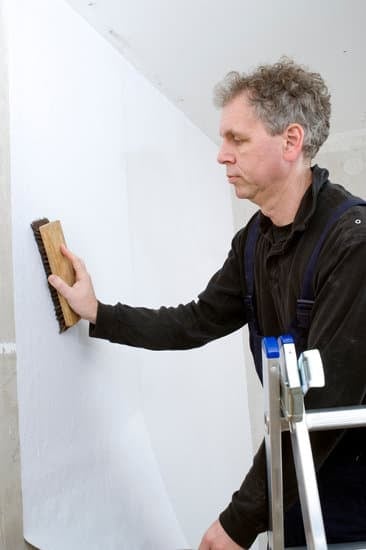Are you looking to improve your surfing skills from the comfort of your own home? In this article, we will explore how to improve surfing at home, covering everything from setting up your home surf training space to practicing mental surf training and improving surfing technique.
Surfing is not just a sport but a lifestyle, and for devoted surfers, finding ways to improve their skills outside of the water is essential. Whether you’re a beginner looking to build a solid foundation or an experienced surfer aiming to enhance your performance, home surf training can provide numerous benefits. By incorporating targeted exercises, equipment, and mindset practices into your routine, you can make significant improvements in your surfing abilities.
In the following sections, we will discuss different aspects of home surf training and provide practical tips for creating a surfing environment at home, developing strength and balance through specific workouts, using surfing equipment such as balance boards, and utilizing mental techniques for visualization and mindset practice. Additionally, we will delve into refining surfing technique through consistent practice and analyze the importance of nutrition and recovery in supporting your surf training efforts.
Whether you live near the ocean or miles away from the nearest wave, enhancing your surfing skills at home is well within reach.
Setting Up Your Home Surf Training Space
The key to improving your surfing skills at home is to create a space that mimics the environment of the waves as much as possible. In order to do this, you’ll need to find a space with enough room for movement and possibly invest in some surfing equipment to help you simulate the feeling of being on the water.
One important factor in setting up your home surf training space is creating a comfortable and safe environment. Look for a space with enough room for movement and make sure it’s clean and free from obstacles that could cause accidents. A spacious garage, backyard, or even a living room can be transformed into your own personal surf training spot.
Consider investing in surfing equipment, such as a surf balance board or an Indo Board, to help improve your balance and stability. These tools can also help you practice your pop-up and overall body positioning while mimicking the feeling of riding a wave. Additionally, having these tools at home allows you to practice consistently without having to rely solely on ocean conditions.
Another important aspect of creating a surfing environment at home is incorporating visual cues that remind you of the ocean. You can decorate your space with surf-related imagery, play sounds of waves crashing, or even bring in some sand or beach elements to enhance the atmosphere and get you in the right mindset for training.
| Surfing at Home | Setting Up Your Home Surf Training Space |
|---|---|
| Create a clean and spacious area | Incorporate visual cues related to surfing |
| Invest in surfing equipment like balance boards | Transform your garage or living room into a surf training spot |
Surfing Workouts
Improving surfing skills at home involves more than just mental preparation and technique practice. It also requires physical conditioning to ensure that you are in top shape when you hit the waves. Here are some effective exercises to help improve strength, balance, and endurance for surfing:
1. Core Strengthening: A strong core is essential for maintaining balance and stability while riding waves. Incorporate exercises such as planks, Russian twists, and lying leg raises into your routine to strengthen your core muscles.
2. Leg Strength: Surfing requires strong leg muscles for paddling and riding the waves. Squats, lunges, and calf raises are great exercises to build lower body strength.
3. Cardiovascular Endurance: Surfing can be physically demanding, so it’s important to have good cardiovascular endurance. Running, swimming, and cycling are excellent workouts to improve stamina and overall fitness.
Remember to always warm up before starting your workout routine and cool down afterwards to prevent injury and aid in recovery. By incorporating these exercises into your regular training regimen, you can effectively improve your surfing performance at home.
| Exercise | Description |
|---|---|
| Planks | An exercise where you hold a push-up position with your arms straight for a certain amount of time. |
| Squats | Lower your body by bending your knees as if you were about to sit down. |
| Running | A form of aerobic exercise that involves moving at a rapid pace on foot. |
Using Surfing Equipment at Home
Benefits of Using Surfing Equipment at Home
Using surfing equipment such as a surf balance board and Indo Board at home can greatly improve surfing skills. These tools help surfers to mimic the movements and balance required while riding the waves, thus enhancing muscle memory, strength, and coordination. By incorporating these pieces of equipment into your home training routine, you can effectively work on maintaining stability and improving your overall surfing performance.
Tips for Practicing With a Surf Balance Board
To make the best use of a surf balance board at home, start by finding a suitable flat surface where you have enough space to move freely. It’s important to begin with basic exercises such as simply standing on the board and adjusting your weight from side to side to get accustomed to the feeling of balancing.
As you progress, try practicing more advanced movements like carving or cross-stepping. Remember to always prioritize safety by starting slow and using padding underneath the board when necessary.
Tips for Practicing With an Indo Board
An Indo Board is another fantastic tool for improving surfing skills at home. This balance board simulates the feeling of riding waves by challenging your stability while standing on top of it. In order to benefit from using an Indo Board, start by positioning the board on a non-carpeted floor and begin with simple exercises like finding your center of balance in both directions.
Gradually incorporate more dynamic movements like squats or performing 180-degree turns on the board to enhance your control and agility. By consistently utilizing these tips for practicing with a surf balance board and Indo Board, surfers can effectively improve their skills even without being in the water.
Mental Surf Training
When it comes to improving surfing at home, mental surf training plays a crucial role in preparing your mind for success out on the waves. Here are some tips to help you visualize and practice the right mindset for surfing success:
1. Visualization Techniques: Use visualization exercises to imagine yourself riding the perfect wave, performing flawless maneuvers, and achieving your surfing goals. Find a quiet space at home where you can relax and visualize your ideal surfing experience. Close your eyes and picture yourself confidently conquering the waves, feeling the power of the ocean, and maintaining perfect balance and control.
2. Breathwork and Meditation: Incorporate breathwork and meditation into your daily routine to help calm your mind, reduce anxiety, and improve focus. Practice deep breathing techniques to center yourself before visualizing successful surfing sessions. By mastering your breath and quieting your thoughts, you can develop a strong mental foundation for tackling challenging surf conditions with clarity and composure.
3. Positive Affirmations: Use positive affirmations to cultivate a winning mindset for surfing success. Fill your mind with empowering statements such as “I am a skilled surfer,” “I am confident in my abilities,” and “I am capable of mastering any wave.” Repeat these affirmations daily to reinforce a positive self-image and boost your confidence both on land and in the water.
By incorporating these mental surf training techniques into your home practice routine, you can strengthen your mental resilience, enhance focus, and develop the right mindset for achieving peak performance when you hit the waves. Remember that mental preparation is just as important as physical training when it comes to improving surfing skills at home.
Surfing Technique
Improving surfing technique is essential for becoming a better surfer, and practicing at home can be a great way to achieve this goal. With the right approach, surfers can use their time at home to work on their skills and form, ultimately leading to improved performance in the water. Here are some tips on how to improve surfing at home through focused technique practice.
One of the best ways to improve surfing technique at home is by practicing specific movements and maneuvers that are commonly used while surfing. This could include practicing pop-ups, perfecting the bottom turn, or working on the timing of your maneuvers. By focusing on these specific aspects of surfing technique, surfers can develop muscle memory and improve their overall form.
Another effective way to improve surfing technique at home is by using video analysis. Recording yourself while practicing on a balance board or even just going through the motions of different surf maneuvers can provide valuable feedback. By watching these videos and analyzing your technique, you can identify areas for improvement and make adjustments accordingly.
Additionally, incorporating functional training exercises into your home surf training routine can also help improve surfing technique. Exercises that focus on core strength, balance, and flexibility are particularly beneficial for improving surf skills and form.
By strengthening key muscle groups and improving overall body control, surfers can enhance their ability to perform various maneuvers while out in the water. Overall, by implementing these strategies for improving surfing technique at home, surfers can take their skills to the next level and see significant improvements in their performance when hitting the waves.
Watching Surfing Videos
Learning From the Pros
One of the best ways to improve surfing at home is by watching and analyzing surfing videos from professional surfers. By observing their techniques, maneuvers, and strategies, you can gain valuable insights into improving your own skills. Pay attention to their body positioning, wave selection, timing, and overall style. Take note of how they navigate different types of waves and conditions, and try to incorporate those techniques into your own training.
Video Analysis and Visualization
After watching surfing videos, take some time to analyze and visualize yourself recreating the same moves and riding the same waves. Visualizing success can help improve mental preparation and confidence when you hit the water. By mentally rehearsing different scenarios and techniques, you can effectively train your brain to respond instinctively when faced with similar situations while surfing.
Applying Techniques in Practice
Once you’ve studied different surfing techniques from pro surfers, it’s important to apply what you’ve learned during your home surf training sessions. Whether it’s practicing specific turns on a balance board or visualizing yourself catching a perfect wave while doing breathing exercises, integrating these techniques into your routine will help enhance your surfing skills. Additionally, filming yourself during practice sessions can provide valuable feedback for further improvement.
By incorporating regular video analysis into your home surf training routine, along with visualization techniques and practical application of new skills, you can effectively enhance your overall surfing performance when hitting the waves.
Nutrition and Recovery
Improving your surfing skills at home is not just about physical training and practice. It also involves taking care of your body through proper nutrition and recovery. Here are some tips on how to support your surf training with the right diet and rest:
- Nutrition: Eating the right foods can significantly impact your surfing performance. Make sure to include plenty of fruits, vegetables, lean proteins, and whole grains in your diet. These foods can provide the energy and nutrients you need for surfing workouts and practice sessions. Additionally, staying hydrated is crucial for optimal performance, so be sure to drink plenty of water throughout the day.
- Rest: Proper rest and recovery are essential for improving surfing skills. Your body needs time to repair and rebuild after intense training sessions, so make sure to get an adequate amount of sleep each night. In addition to sleep, engaging in relaxation techniques such as meditation or yoga can help alleviate muscle tension and promote overall well-being.
- Supplements: Some surfers may benefit from incorporating supplements into their diet, such as omega-3 fatty acids for joint health or protein powder for muscle recovery. However, it’s important to consult with a healthcare professional before adding any new supplements to your routine.
By paying attention to your nutrition and recovery practices, you can support your surf training efforts and improve your overall performance in the water. Remember that a well-nourished and rested body is better equipped to handle the physical demands of surfing.
Conclusion
In conclusion, consistent home surf training is crucial for improving skills and performance in the water. By setting up a dedicated surfing space at home and incorporating surfing workouts, mental training, technique practice, and video analysis into your routine, you can make significant strides in your surfing abilities. It’s important to remember that becoming a better surfer doesn’t just happen on the waves – it also requires dedication and effort off the water.
One of the key benefits of improving surfing skills at home is that it allows you to maintain and even enhance your abilities when you’re not able to get out onto the water.
Whether it’s due to unfavorable weather conditions, a lack of access to surf spots, or other commitments that keep you away from the beach, having a space and a regimen for home surf training ensures that you continue to progress as a surfer no matter the circumstances.
Ultimately, honing your surfing skills at home can have a direct impact on your performance in the water. By dedicating time and effort to consistently train and improve outside of actual surfing sessions, you’ll be better prepared to tackle challenging waves, execute advanced maneuvers, and ultimately enjoy an enhanced experience every time you hit the surf.
So if you’re looking to take your surfing to the next level, remember that improving at home is just as important as hitting the waves.
Frequently Asked Questions
How Can I Practice Surfing at Home?
Practicing surfing at home can be challenging but not impossible. You can start by working on your balance and core strength through exercises like yoga, squats, and planks. You can also practice pop-ups on a balance board or even on the ground to improve your technique.
How Can I Get Better at Surfing Fast?
To improve at surfing quickly, focus on building your paddle strength and endurance. Incorporate swimming into your fitness routine to improve your paddling power. Additionally, spend as much time as possible in the water actually surfing to work on your technique, timing, and wave selection.
How Can I Get a Surfer Body at Home?
Getting a surfer body at home involves a combination of cardio, strength training, and flexibility exercises. Incorporate activities like cycling, running, or swimming to build endurance. Strength training exercises such as push-ups, lunges, and squats are great for building overall strength. Don’t forget to include yoga or stretching to maintain flexibility which is important for surfing.

I’m thrilled to have you here as a part of the Remodeling Top community. This is where my journey as an architect and remodeling enthusiast intersects with your passion for transforming houses into dream homes.





